Comparative Review: iPhone SE vs iPhone 11
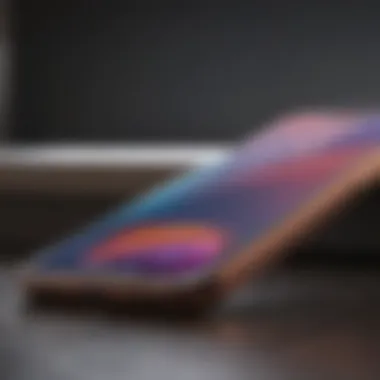
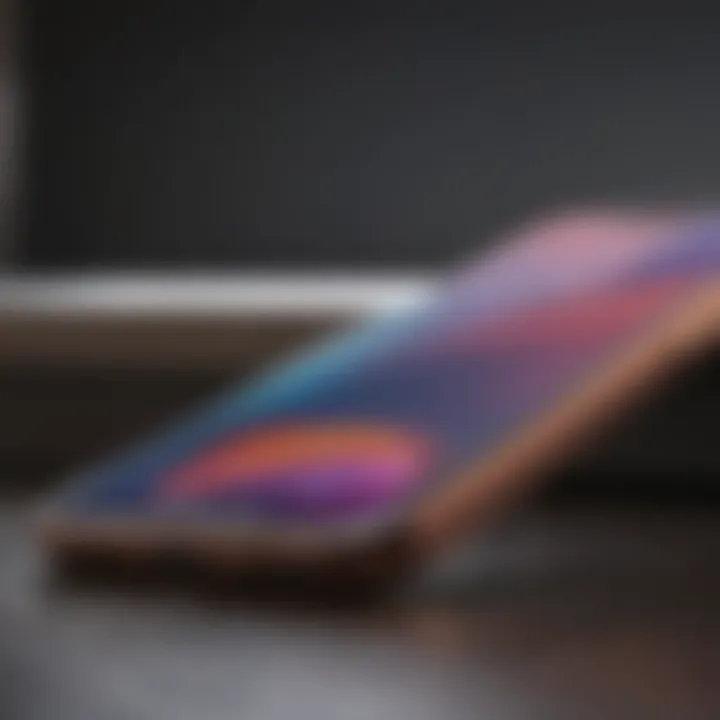
Product Overview
Prologue to the Apple product being discussed
The iPhone SE and iPhone 11 are two formidable options in Apple's smartphone lineup. Each caters to a distinct audience while encapsulating Apple's design philosophy and technological prowess. The SE is designed for those seeking a compact device with essential features at a lower price point. In contrast, the iPhone 11 appeals to users desiring advanced specifications and a premium experience.
Key features and specifications
The iPhone SE is equipped with Apple’s A13 Bionic chip, a single 12 MP rear camera, and a 4.7 inch Retina HD display. It supports Touch ID and retains a classic design reminiscent of earlier models. This provides essential performance without the overwhelming features found in flagship devices.
On the other hand, the iPhone 11 boasts a dual-camera system, improved night mode capabilities, and a larger 6.1 inch Liquid Retina HD display. Powered by the same A13 Bionic chip, it offers a robust performance in a more modern form factor, with Face ID functionality further enhancing user access and security.
Design and aesthetics
The design of the iPhone SE is traditional, featuring an aluminum and glass exterior with a home button. In contrast, the iPhone 11 showcases a more contemporary look with multiple color options and a sleek glass back.
The iPhone SE appeals to users who prefer familiarity, while the iPhone 11 attracts those who admire modern aesthetics and functionality.
Performance and User Experience
Performance benchmarks
In terms of performance, both devices utilize the A13 Bionic chip, ensuring fast processing speeds for applications and multitasking. Benchmarks reveal similar performance metrics, with only minor variations in real-world testing as shown in recent comparisons from industry reviews.
User interface and software capabilities
Both models run on the latest iOS, ensuring a seamless user experience across the board. The interface remains intuitive, with features tailored to enhance user interaction. Software capabilities, such as advanced photo editing and gaming performance, are substantial on both devices, despite the SE having limitations due to its single-camera layout.
User experiences and feedback
User experiences vary.
- Many users of the iPhone SE praise its ease of use, especially those transitioning from older iPhone models.
- Customers of the iPhone 11 commend its camera quality and overall capability for high-performance tasks.
Comparison with Previous Models or Competitors
Advancements and improvements from previous models
The iPhone SE offers improvements over its predecessor with the inclusion of the A13 chip, elevating performance significantly. The iPhone 11, as compared to the iPhone XR, introduces notable enhancements in camera quality and battery life, underscoring Apple's commitment to evolving user needs.
Competitive analysis with other similar products
When compared to competitors like the Google Pixel 5 or Samsung Galaxy S20, both models bring unique strengths. The SE focuses on price-to-performance ratio, while the iPhone 11 aligns closer with premium offerings with its camera and design.
Value proposition
The SE represents excellent value for Apple fans on a budget, while the iPhone 11 solidifies itself in the premium segment.
Tips and Tricks
How-to guides and tutorials for optimizing the Apple product's performance
Users can enhance their experience by managing background apps and ensuring software is up to date through regular checks under settings.
Hidden features and functionalities
Using shortcuts and customizing settings can unlock hidden functionalities, such as altering camera settings for better photography outputs, particularly on the iPhone 11.
Troubleshooting common issues
Common issues such as performance hiccups or touchscreen responsiveness can be addressed by resetting settings or conducting a software update.
Latest Updates and News
Recent developments in software updates and new features
The introduction of iOS 16 has benefited both models, adding features like customizable lock screens and improved notifications.
Industry news and rumors surrounding upcoming products
Current rumors suggest a potential iPhone SE 4 could be on the horizon, but details are still scarce as speculation continues.
Events and announcements from Apple
Apple's annual events often center around new product announcements and software updates, keeping consumers informed about future developments.
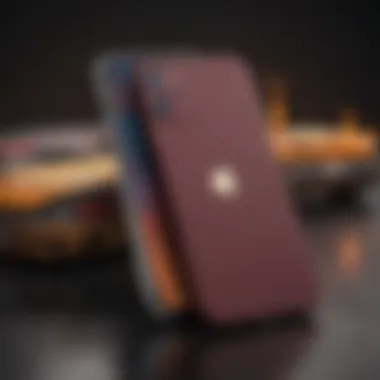
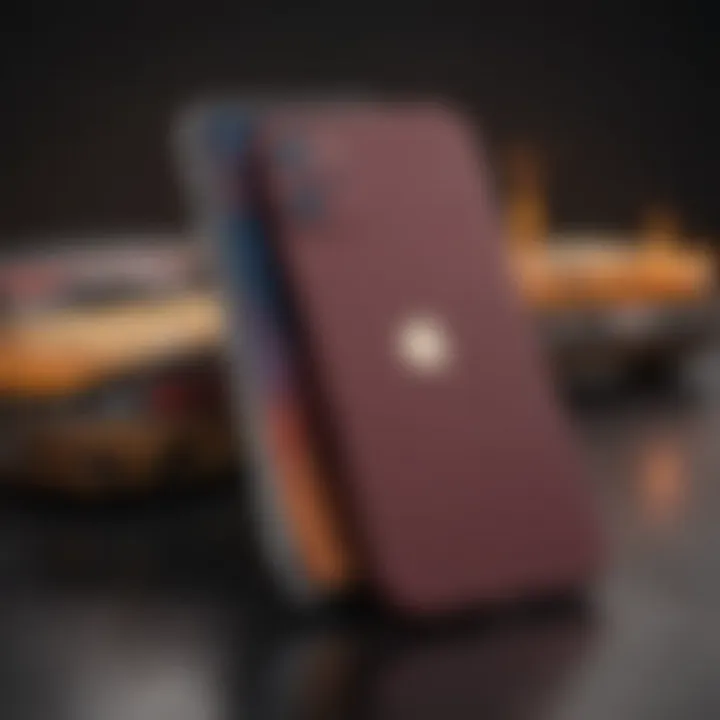
Prologue to iPhone SE and iPhone
In the ever-evolving landscape of smartphones, the iPhone SE and iPhone 11 stand out as notable representations of Apple's approach to catering to diverse user needs. Each model carries distinct characteristics that appeal to different segments of consumers, making this comparison particularly relevant. Whether one prioritizes compact design or advanced features, understanding these devices can significantly influence purchasing decisions.
The iPhone SE, introduced as an affordable alternative, combines the essence of classic iPhone design with modern technology. Its size and price attract consumers who favor simplicity and functionality over extravagant features. Most importantly, it provides access to Apple's ecosystem at a more accessible price point.
In contrast, the iPhone 11 emerges as a powerhouse in performance and functionality. The device offers a larger display, superior camera capabilities, and a range of features that appeal to users seeking cutting-edge technology and a premium experience. For tech enthusiasts and professionals who demand higher performance, the iPhone 11 can be seen as a more viable option.
When considering these models, several factors come into play. Specifications, such as processing power, memory, and display quality, are crucial in determining the overall user experience. Equally significant are aspects like build quality and design aesthetics, which reflect personal style and preferences. Also, potential buyers will want to consider battery life, software support, and overall value for money.
By examining both the iPhone SE and iPhone 11 in detail, this article aims to offer comprehensive insights that will facilitate informed decision-making. Readers will find a thorough analysis of specifications, design, and performance, all while taking into account the unique benefits each model presents.
"Understanding the distinction between the iPhone SE and iPhone 11 can illuminate the choice that aligns best with your individual needs."
In summary, both models represent pivotal points in Apple's lineup, but your choice should align with your personal priorities and usage patterns.
Historical Context
Understanding the historical context of the iPhone SE and iPhone 11 models is crucial for an in-depth comparative analysis. The unfolding narrative of Apple’s smartphone evolution presents a window into how these devices have been shaped by technological advancements and shifting consumer needs. Each model encapsulates a distinct era in smartphone design and functionality, showcasing Apple's adaptation to market demands while maintaining its signature style.
Evolution of the iPhone SE
The original iPhone SE made its debut in March 2016. This device was aimed at consumers desiring a compact option without sacrificing performance. Apple designed the SE based around the 6S technology; the device utilized the same chip, camera system, and a similar aesthetic to its predecessor, the iPhone 5S. The SE was notable for its smaller form factor, appealing to users who preferred a device that could be comfortably held and operated with one hand. Its affordability element also positioned it as an entry point for users new to the Apple ecosystem.
The 2020 iteration of the iPhone SE continued this legacy, while introducing several modern elements. It featured an A13 Bionic chip, paving the way for improved processing capabilities. This version also brought essential aspects like wireless charging and upgraded camera features. The iPhone SE ultimately serves as a testament to Apple's strategy of offering high-spec devices at a lower price point to cater for various market segments.
The iPhone Series Launch
The iPhone 11 series launched in September 2019 and represented a significant advancement in Apple's smartphone lineup. This series introduced three variations: the standard iPhone 11, the iPhone 11 Pro, and the iPhone 11 Pro Max. Apple focused heavily on enhancing the camera system, which included a dual-camera setup for the iPhone 11, enabling users to capture wide-angle and nighttime photos with more clarity. The Pro versions took this further with a triple-camera array.
During the launch event, Apple emphasized the improved battery life, enhanced durability factors such as water resistance, and the introduction of the A13 Bionic chip. This chip not only supported better performance but also improved energy efficiency, demonstrating Apple's continued commitment to sustainability and user experience. Overall, the iPhone 11 series positioned itself firmly in the premium market, offering features that appealed to both casual users and professionals alike.
Design and Build Quality
The design and build quality of any smartphone profoundly impact user satisfaction and product longevity. It can affect not only the way the device looks but also how it feels to hold and use. In the case of the iPhone SE and iPhone 11, these elements are crucial in determining which device appeals more to specific user preferences. The design reflects not only aesthetic choices but also practical considerations. For consumers who value a robust and eye-catching device, these aspects can often sway buying decisions.
Physical Dimensions and Weight
When comparing the physical dimensions, the iPhone SE has a more compact and lightweight design. It measures approximately 138.4 x 67.3 x 7.3 mm and weighs around 148 grams. This makes it easy to use with one hand and carry in a pocket. Conversely, the iPhone 11 is larger with dimensions of 150.9 x 75.7 x 8.3 mm and a weight of about 194 grams. This adds a premium feel but may be cumbersome for some users. The choice between them often comes down to whether one prefers a lightweight device that is more portable or a larger one that may provide more screen real estate for apps and media.
Material and Finish
In terms of materials, the iPhone SE comes with an aluminum body that feels sturdy and has a glass front and back. This gives it a classic look, reminiscent of earlier iPhone designs. The iPhone 11, however, employs a more modern construction featuring glass on both the front and back, along with a seamless aluminum frame. This not only enhances aesthetics but also improves wireless charging capabilities. Users who prioritize durability may lean towards the iPhone 11, which boasts Corning's Ceramic Shield front cover offering advanced scratch and drop resistance.
Color Options Available
Color options play a significant role in personal preference. The iPhone SE is available in black, white, and Product(RED), which appeals to users looking for simplicity and elegance. In contrast, the iPhone 11 provides a broader palette with multiple colors, including purple, yellow, green, black, white, and Product(RED). This variety allows users to express individual style. Those seeking a more personalized device might find the iPhone 11’s options more appealing, while others may prefer the classic and straightforward aesthetic of the iPhone SE.
Overall, when it comes to design and build quality, the choice between iPhone SE and iPhone 11 often rests on personal preferences regarding size, materials, and aesthetic appeal.
Display Specifications
Display specifications play a crucial role in the overall experience offered by smartphones like the iPhone SE and iPhone 11. A smartphone's display is the primary interface through which users interact with the device. Thus, elements such as screen size, type, resolution, and clarity can significantly impact usability, content consumption, and navigation.
When considering a smartphone, potential buyers often seek a device that balances functionality with visual appeal. The right display can enhance not just practical use but also multimedia experiences—like watching videos, browsing photos, or gaming. Therefore, it is essential to comprehend the display specifications of both the iPhone SE and iPhone 11 before making an informed decision.
Screen Size and Type
The iPhone SE features a 4.7-inch Retina HD display, whereas the iPhone 11 boasts a larger 6.1-inch Liquid Retina HD display. The difference in screen size affects usability for various applications. The smaller screen of the iPhone SE may appeal to users who prefer compact devices, making it easier to handle with one hand.
On the other hand, the larger display of the iPhone 11 enhances the viewing experience for multimedia content and multitasking. Additionally, both models utilize LCD technology, but the Liquid Retina display on the iPhone 11 offers a wider color gamut and better viewing angles, making it advantageous for media consumption.
Resolution and Clarity
In terms of resolution, the iPhone SE has a resolution of 1334 x 750 pixels, while the iPhone 11 features a higher resolution of 1792 x 828 pixels. This difference means that the iPhone 11 can deliver sharper images and better detail when viewed side-by-side with the iPhone SE.
Clarity is further enhanced by the pixel density, which is approximately 326 ppi for the iPhone SE and 326 ppi for the iPhone 11 as well. Although both have the same pixel density, the differing sizes and resolutions can lead to different experiences. Users may notice greater vibrancy and depth in the images on the iPhone 11, especially when consuming high-definition content.
"A phone's display is not just a feature; it defines how users perceive and interact with their device."
The consideration of display specifications is vital for those who prioritize visual experience. Understanding differences aids consumers in selecting a device that aligns with their needs, whether favoring portability or a more immersive visual experience.
Performance Comparison
Performance is a crucial aspect when evaluating smartphones, as it directly impacts user experience. A device's ability to handle applications smoothly, manage multitasking efficiently, and perform resource-intensive tasks can shape a user’s satisfaction. When comparing the iPhone SE and iPhone 11, the performance metrics showcase distinct differences that cater to varying user preferences and needs.
Processor and Speed


The processors in both the iPhone SE and the iPhone 11 represent Apple's dedication to performance. The iPhone SE is powered by the A13 Bionic chip, the same chip found in the iPhone 11 models. This results in a high-speed performance that can handle demanding applications and tasks effectively.
In practical terms, both devices provide responsiveness and fluidity required for daily operations. Users can expect rapid app launches, smooth gameplay, and quick transitions between apps. The A13 chip is built on a 7-nanometer technology, allowing for enhanced speed while being energy-efficient, which prolongs battery life.
RAM and Multitasking
RAM plays a vital role in multitasking. The iPhone SE comes with 3GB of RAM, which is adequate for running several applications concurrently. However, the iPhone 11, with its 4GB of RAM, provides an edge when dealing with more demanding multitasking scenarios. In real-world usage, this means users who tend to run multiple apps—such as browsing, streaming, and navigating—simultaneously may find the iPhone 11 handles these tasks more comfortably.
In summary, while both models perform well, those seeking superior multitasking capabilities might lean towards the iPhone 11. A solid understanding of performance specifics can guide potential buyers in making informed choices that align with their usage patterns.
Camera Capabilities
In today's smartphone era, the camera capabilities of a device frequently determine its attractiveness to potential buyers. Smartphones have become essential tools for capturing moments in high-quality formats. For both iPhone SE and iPhone 11, the camera is a standout feature, aiming to offer users advanced photography options. In this section, we will highlight notable elements of their camera systems, the benefits they provide, and practical considerations for users.
Rear Camera Specifications
The rear camera specifications play a crucial role in how a smartphone is perceived. The iPhone SE comes with a single 12-megapixel rear camera. This camera boasts an f/1.8 aperture, which enhances low-light capture. It supports various features like optical image stabilization, and Smart HDR, which improves detail in both bright and dark areas of photos.
In contrast, the iPhone 11 offers a dual-camera system, comprised of a 12-megapixel wide camera and a 12-megapixel ultra-wide camera. The addition of the ultra-wide lens broadens shooting horizons, allowing photos with greater context. Both rear cameras feature Night mode and enhanced Smart HDR. This dual setup provides versatility that appeals to different users, from casual to more serious photographers.
Front Camera Features
The front camera has become increasingly significant, especially for social media users. The iPhone SE features a 7-megapixel front camera. Its f/2.2 aperture allows for decent selfies. The camera supports Portrait Mode, enabling depth-of-field effects that yield professional-looking photos.
On the other hand, the iPhone 11 boasts a 12-megapixel front camera. This camera also supports Night mode and 4K video recording, which significantly elevate its usability for content creators. Additionally, the iPhone 11's front-facing camera allows for more detailed selfies and group shots, enriching the user experience.
Video Recording Quality
Both iPhones aim to deliver high-quality video recording capabilities. The iPhone SE captures 4K video up to 60 fps, and its video specs include features such as optical image stabilization and enhanced audio capture. This makes it a solid choice for users who focus on video quality.
Conversely, the iPhone 11 pushes boundaries further by supporting advanced video recording features. Users can record 4K video at multiple frame rates up to 60 fps, with extended dynamic range up to 60 fps. The enhanced video stabilization and audio capabilities offer a refined experience for videographers of all levels.
Key Takeaway: The camera capabilities of both iPhone SE and iPhone 11 cater to varying photography needs, but the iPhone 11’s advancements allow for much greater versatility.
In summary, Apple's camera offerings are integral to the user experience. Whether it's the single-camera simplicity of the iPhone SE or the multifaceted approach of the iPhone 11, each model provides distinct advantages for various user preferences.
Battery Life and Charging
Battery life and charging speed are paramount considerations for any modern smartphone user. With increasing reliance on mobile devices for daily tasks, having a device that can last through the day without frequent recharging is invaluable. Both the iPhone SE and iPhone 11 cater to this need, but they do so with different specifications and features that appeal to varied user preferences.
Battery Capacity and Longevity
The iPhone SE is equipped with a battery capacity of about 1,821 mAh, while the iPhone 11 boasts a larger battery, providing approximately 3,110 mAh. This difference in capacity directly influences longevity, where the iPhone 11 typically lasts longer under similar usage conditions. Users engaging in heavy tasks such as gaming, photo-editing, or video streaming may find the iPhone 11's battery more suited to their needs. The SE, although smaller in size, still manages reasonable performance with the A13 Bionic chip, optimizing power consumption for everyday tasks like browsing or messaging.
In real-world usage, iPhone 11 users often report lasting beyond a full day on a single charge, especially under moderate use. In contrast, iPhone SE users might find themselves needing to recharge by late afternoon if engaging in intensive tasks. It is worth noting the effectiveness of battery health management features introduced in recent iOS versions for both models, which help maintain long-term battery performance.
Charging Options and Speed
When discussing charging options, the iPhone 11 and SE have multiple similarities, but also some notable differences. Both models support fast charging, which can provide up to 50% charge in roughly 30 minutes when paired with the right adapters. Specifically, they can utilize Apple's 18W charger (or higher) to achieve this quick fill-up. Users who require instant energy to last through the day benefit greatly from this feature.
Additionally, both phones support wireless charging through Qi-certified chargers, which enhances convenience. While the charging speeds via wireless might be slower compared to wired alternatives, the option grants flexibility for users who prefer a cable-free environment.
"The choice between the iPhone SE and iPhone 11 often comes down to how user prioritizes battery life and overall charging convenience."
In summary, the importance of assessing battery life and charging features cannot be overstated. Whether you choose the iPhone SE for its compact design and solid performance or the iPhone 11 for its extended longevity and faster charging capabilities, understanding these elements will significantly influence your user experience.
Software Features
The software features of the iPhone SE and iPhone 11 play a critical role in differentiating these two models. Software not only dictates the functionality of the devices but also impacts user experience significantly. Consumers need to consider various aspects, including the operating system updates and the unique software offerings that each model brings.
Operating System and Updates
Both the iPhone SE and iPhone 11 run on Apple's iOS, which is known for its smooth performance and user-friendly interface. The current version, as of now, is iOS 16, providing enhanced functionalities and features that enhance the overall user experience. When it comes to updates, Apple has a robust ecosystem that ensures devices receive updates for several years after their release. While the iPhone SE launched in 2020, it is still eligible for iOS updates, allowing users to benefit from new features and security enhancements.
However, there are some considerations. The iPhone 11, being a newer model, is likely to receive updates for a longer duration than the iPhone SE. This difference can be essential for users who prioritize longevity and want the latest software advancements as they become available. Moreover, Apple’s software ecosystem is designed to improve device performance over time, making iOS updates a crucial factor when evaluating the longevity of these smartphones.
Unique Software Offerings
In addition to the standard iOS features, both devices come with unique software offerings that cater to different user needs. The iPhone 11 offers advanced camera features like Night mode and Deep Fusion, which enhance photo quality significantly. These features use software algorithms to optimize image processing. This can be an essential factor for photography enthusiasts.
On the other hand, the iPhone SE focuses on essential apps and streamlined software options. It does not have all the advanced features present in the iPhone 11 but provides a solid user experience with its basic yet effective offerings. Users who prefer simplicity and straightforward functionality may find the iPhone SE more appealing.
"Software plays a vital role in the choice between the iPhone SE and iPhone 11, as it influences not just current performance but also future usability."
To summarize, while both models provide a solid software experience through iOS, the iPhone 11 offers extended usability and advanced features. The choice between the two should be influenced by individual user requirements, including how much weight they put on receiving future updates and innovative camera capabilities.
User Experience and Usability

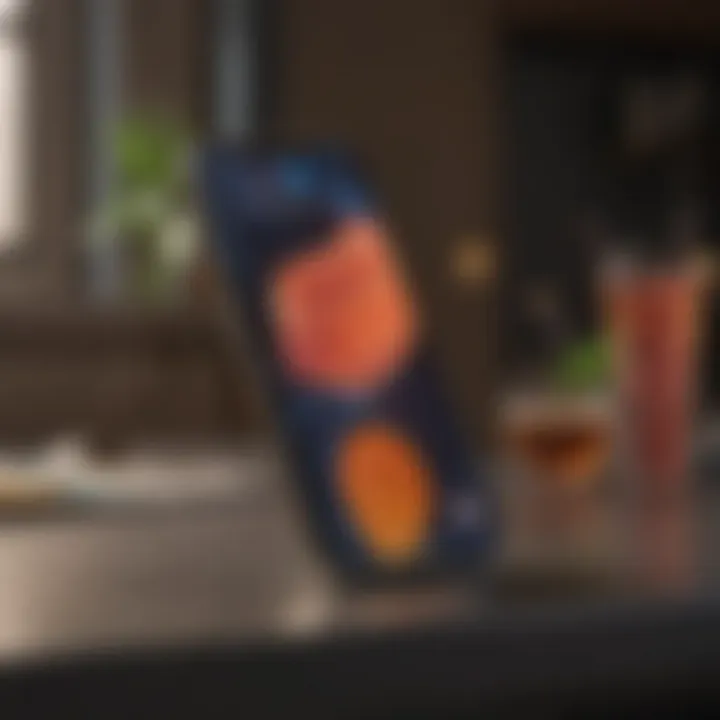
User experience (UX) and usability are critical aspects in evaluating any smartphone. In this article, we will explore how the iPhone SE and iPhone 11 deliver on these fronts. For potential buyers, understanding the nuances of user experience can significantly inform purchasing decisions. Each device's usability can influence daily interactions, determining how seamless tasks are performed. Factors like intuitive design, accessibility features, and user satisfaction are fundamental in shaping overall impressions of these smartphones.
User Interface and Accessibility
Both the iPhone SE and iPhone 11 utilize Apple's iOS, which is renowned for its user-friendly interface. The layout is designed to be straightforward, emphasizing simplicity and efficiency. Users can easily navigate between apps, settings, and other features with finger gestures. Accessibility is an essential consideration for many users. Apple's commitment to making technology inclusive is evident in its range of features:
- VoiceOver: A screen reader offering spoken feedback.
- Magnification: Enabling users to zoom in on content.
- Hearing Aid Compatibility: Enhancing audio output for users with hearing aids.
Such features enhance the usability of both models, catering to varied needs. The iPhone 11 offers more advanced accessibility options due to its more recent hardware capabilities.
Feedback from Actual Users
Real-world user feedback provides invaluable insights into the practical usability of any device. Reviews and forums reveal a spectrum of experiences:
- iPhone SE Users: Many appreciate its compact design and strong performance for the price. Users often highlight its lightweight feel and ease of handling. However, some mention that the smaller screen may not be suitable for all tasks, particularly multimedia consumption.
- iPhone 11 Users: Feedback generally points to its superior display quality and camera capabilities. Users enjoy the larger screen, which offers more immersive experiences. On the downside, some note that it is bulkier than the SE, potentially making it less comfortable for extended use.
"User feedback is crucial, as it can reveal aspects of a device that specifications alone cannot."
Online platforms like Reddit and tech reviews on sites such as Wikipedia provide first-hand accounts from users. These comments can be guiding for potential buyers, showcasing what to expect when using the iPhone SE and iPhone 11 in everyday life.
Pricing and Value Proposition
Understanding the pricing and value proposition of the iPhone SE and iPhone 11 is crucial for consumers who seek to make a wise investment in a smartphone. These two models occupy different segments in the Apple ecosystem. The decisions regarding purchase often hinge on more than just specifications; they also reflect the consumer’s budget and what they value in a smartphone experience. This section addresses how both the cost and the features of these devices align with user expectations and makes it easier for potential buyers to determine which model best fits their needs.
Base Pricing Analysis
The base prices of the iPhone SE and iPhone 11 inform consumers about their respective market positions. At launch, the iPhone SE was positioned as a budget-friendly alternative, appealing to those who want an Apple product without the high price tag. The starting price was significantly lower than that of the iPhone 11, which was marketed as a more premium offering with advanced features. As prices fluctuate over time due to promotions or new model releases, understanding the original pricing provides insight into the models’ value.
For example, the iPhone SE often retails at around $399, making it an attractive option for budget-conscious consumers. In contrast, the iPhone 11 started at approximately $699. This substantial difference indicates a varied target audience: while the SE caters to entry-level users, the iPhone 11 appeals to those who prioritize advanced technology and features.
Cost vs. Features Overview
When weighing the cost against the features, potential buyers must consider what they are sacrificing or gaining with each model. The iPhone SE offers solid performance with its A13 Bionic chip, but it lacks some high-end camera functionalities, display technology, and build quality found in the iPhone 11. Users must ask themselves:
- What features matter most to me?
- Am I willing to pay a premium for enhanced camera capabilities or a larger display?
On the other hand, the iPhone 11 justifies its higher price through features that include a dual-camera system, better water resistance, and a more advanced LCD display. Many users find these enhancements essential, especially for photography enthusiasts or those accustomed to a larger screen.
Market Position and Competitors
Understanding the market position of the iPhone SE and iPhone 11 is crucial. The Smartphone industry is not static. New models, features, and prices make this an ever-evolving market. This section will delve into how each device fits within the broader landscape of smartphone offerings and what this means for consumers.
Comparison with Other Brands
When positioning the iPhone SE and iPhone 11, it is essential to compare them against competitors like Samsung Galaxy and Google Pixel. Each brand has its followers and advocates. Here is how both iPhones stack against notable competitors:
- iPhone SE: Positioned as a budget-friendly option. It appeals to users who want powerful performance without breaking the bank. In terms of price, it competes closely with Samsung Galaxy A series and Google Pixel 5a, both of which also target budget-conscious consumers.
- iPhone 11: This model occupies a mid-range space. Its price is higher than the SE but justifiable due to its features. Competitors in this space include the Samsung Galaxy S10 and OnePlus 8. The iPhone 11's camera capabilities and processor speed give it an edge over peers from other brands.
Each competitor has strengths that could attract different user demographics. The comparisons hinge on performance, design, and features that cater to specific user needs. Understanding these dynamics help buyers make informed choices.
Sales Performance Considerations
Analyzing sales performance provides insights into consumer preferences and brand perception. The iPhone series has consistently shown strong sales numbers, largely due to Apple's branding and marketing strategies. The iPhone SE has gained traction among budget users, which indicates a healthy demand for cost-effective devices that do not compromise too much on performance.
In contrast, the iPhone 11's sales numbers reflect its appeal to tech enthusiasts seeking feature-rich devices. Its launch during a specific year and the added functionalities like improved camera technology contributed to strong sales figures.
Factors influencing sales performance include:
- Brand loyalty: Apple's ecosystem promotes repeated purchases.
- Marketing efforts: Strong advertising campaigns can boost visibility.
- Market trends: Shifts towards 5G technology affect buying decisions.
It is crucial to consider these elements when evaluating the overall market success of these iPhone models.
"The market is driven not just by technology but by consumer sentiment and brand loyalty."
By analyzing both components, potential buyers gain a clearer picture of where the iPhone SE and iPhone 11 stand relative to their competition. This information is pivotal in making a well-informed decision.
Culmination
The conclusion of this article plays a vital role in synthesizing the information presented throughout the comparative analysis of the iPhone SE and iPhone 11. It is essential to distill the myriad features, specifications, and user experiences into coherent recommendations. As consumers navigate through the complexities of choosing between these two devices, clear insights can guide their decisions.
The significance of this conclusion lies in its ability to highlight the distinct advantages and limitations of each model. This is particularly pertinent in a market where preferences are diverse—some prioritizing innovative technology while others may favor affordability and practicality.
When evaluating the choices, it's crucial to consider several key elements:
- Performance Needs: The iPhone SE, with its A13 Bionic chip, effectively caters to day-to-day tasks. Meanwhile, the iPhone 11 offers additional performance for resource-heavy applications and gaming.
- User Experience: The design, ergonomics, and interface usability have differentiating impacts on consumer satisfaction. The iPhone 11 presents a more premium feel, with its larger screen and advanced camera features.
- Budget Considerations: Price is often a decisive factor. The iPhone SE is positioned as a budget-friendly option while still providing high-level performance. The iPhone 11, though pricier, justifies its cost with enhanced features and better long-term value.
In summary, a thoughtful conclusion encapsulates the article's insights, enabling potential users to weigh their options based on personal preferences, needs, and financial considerations. This thoughtful approach fosters a more informed consumer base, aligning choices with the evolving technology landscape and user demands.
Final Recommendation
To finalize the assessment, it is essential to provide a straightforward recommendation based on the findings. For those seeking an affordable yet powerful device, the iPhone SE emerges as a compelling choice. It offers a well-rounded performance for everyday use without breaking the bank. Conversely, if state-of-the-art features, superior camera capabilities, and a larger display are priorities, the iPhone 11 certainly provides a more gratifying experience.
Both models serve distinct segments of the market effectively. Ultimately, the ideal choice hinges on individual user requirements and financial constraints. By understanding the distinctions highlighted in this article, users can select a device that best aligns with their lifestyle and technological needs.



